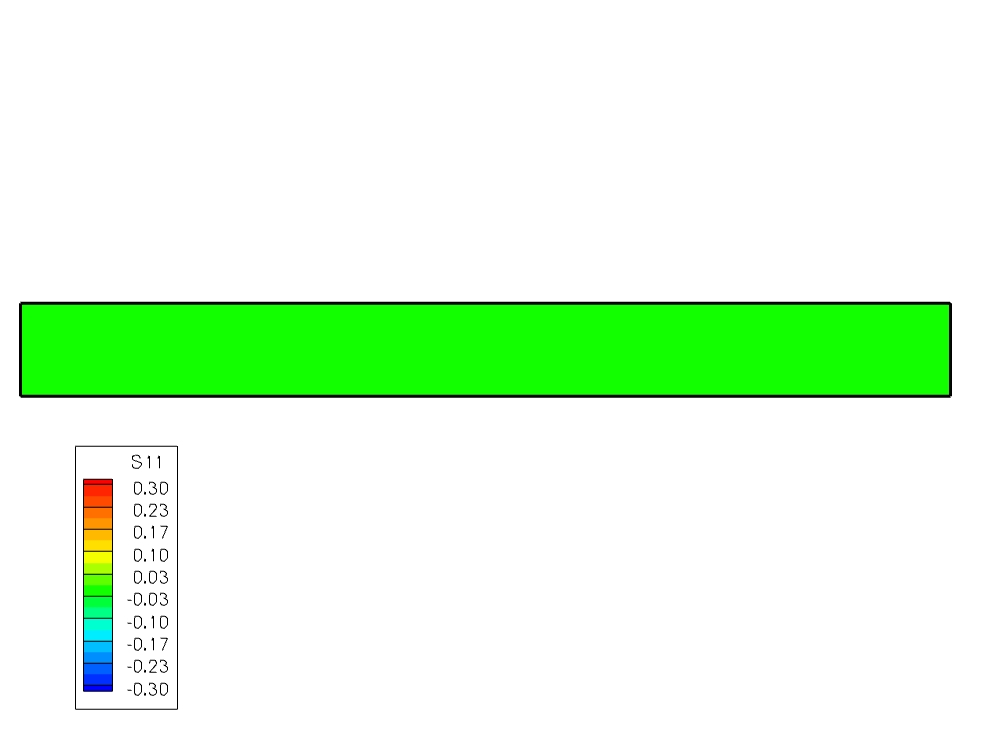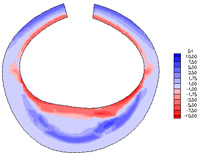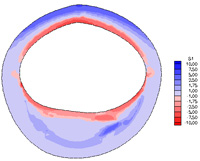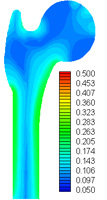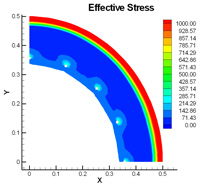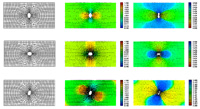About CM

The use of computer-assisted strategies regarding the solution of practice-oriented problems has increased in the last decades rapidly. Computational solutions have entered such diverse areas as building sciences, mechanical engineering, automotive industry, medicine (bio-mechanics) or biology. The fundamental concept which enables this development based on the interdisciplinary combination of the fields: Experiment – Modeling – Simulation.
The program „Computational Mechanics“ forms a cross-linking between engineering fields by combining experiences in theoretical concepts, numeric treatments and experimental reality.
Basics: Tensor Calculus, Thermodynamics, Continuum Mechanics, Structural Mechanics, Numerical Methods, Material Science, Computer Languages, Laboratory Techniques. Experiments: Material Measuring Technique, Parameter Identification of Material Models. Models: Numerical Discretization and Solution Procedures, Finite Element Method (FEM), Optimization Procedures, Homogenization Techniques, Multiscale Modeling. Simulations: All Areas of Engineering Sciences and Engineering Practice. Programs: Commercial Codes (Abaqus, Ansys, Diana, Fluent, CAD) and Scientific Codes (FEAP, FETI-DP).
Interdisciplinary Cooperating Departments: Mechanics, Numerical Mathematics, Scientific Computing, Material Engineering, Material Science, Computer Science, Computational Fluid Dynamics, Structural Analysis, Soil Mechanics, Steel Construction, Environmental Engineering, Waste Management, Mechatronics, Metallurgy.
International Curriculum: Duration: 4 Semesters (2 years), Start: October, Language: Both, English and German are needed: English (first year) and German (second year).
Target Audience: The program is attractive for both German and foreign students. Academic Requirements: Bachelor of Science or Dipl.-Ing. in engineering or natural sciences as well as an equivalent degree in these fields. Language Requirements: German: at least 240 lessons of German from Goethe-Institut or other recognized language institutes. English: at least TOEFL (min. 173 points, computer based) or equivalent certificates.
Employment Opportunities: The graduates find a far operating field in industry and research, e.g. environmental engineering, automotive and metal industry, software engineering, civil and mechanical engineering, manufacturing systems engineering etc.
Videos:
The behaviour of granular frictional material, like sand, is charactrized by a few micromechanical features, wich are difficult to model within the framework of the classical continuum mechanics. This includes the rotation of the particles, the compaction, dilatancy and the shear strength. With the theory of the Distinct Element Method (DEM) we have an alternative methode to model the soil behaviour in a better and more realistic way. The concept maintains that individual material elements, each usually assumed to be rigid, are separate and (possibly) connected only along their boundaries by appropriate interaction laws based on the principles of physics. A commercial realization of the DEM is the Particle Flow Code (PFC) of the company ITASCA. The soil particles are modelled here as disks (2D) or spheres (3D). The edges and boundary conditions of the system are represented by one and two-dimensional wall elements.
Direct shear test with pfc

The first film shows the simulation of a direct shear box test. In the direct shear test, the shear stress required to induce shear failure on a horizontal plane through the soil is evaluated as a function of the normal stress on that plane. Secondary objectives are to determine the relationships between shear stress and horizontal displacement and between vertical compression and horizontal displacement. The yellow disks are the particles of the soil and the red lines are the contacting forces. Below the shear box the resulting load-displacement curves are plotted.
Spc with Pfc

The second film shows the simulation of a CPT with the particle flow code. A cone penetrometer on the end of a series of rods is pushed into the ground at a constant rate and continuous measurements are made. The cone penetrometer consists of the cone, friction sleeve , any other sensors and measuring systems, as well as the connections to the push rods. Most commonly are measured the tip resistance and sleeve friction.

